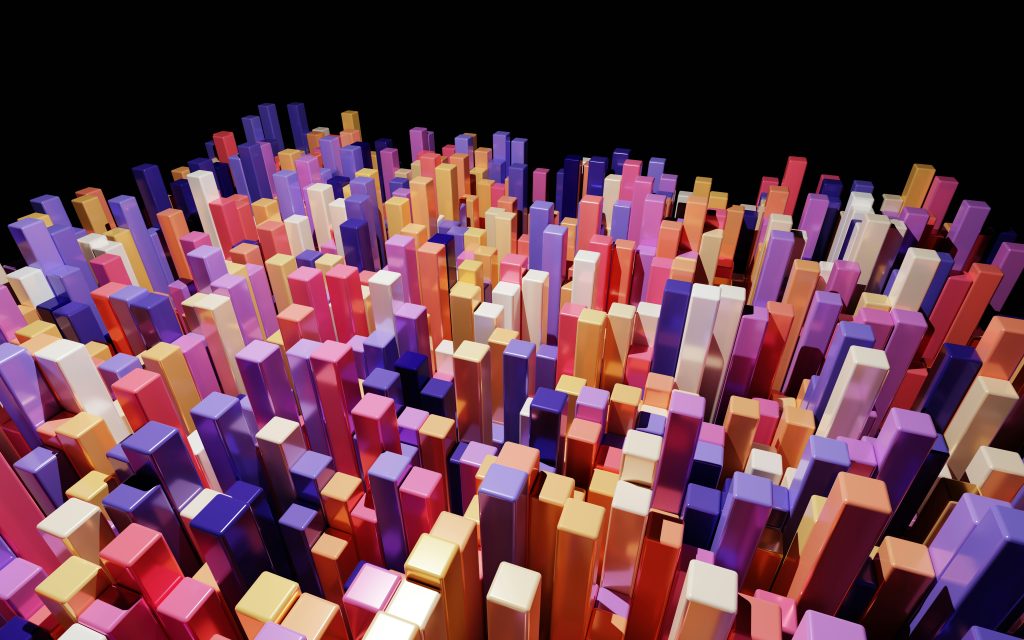Commercial complexes, or commercial multiplexes, combine shopping malls, office towers, hotels, and even residential elements into a single, high-density development. These projects are urban powerhouses, generating enormous revenue streams and serving thousands of people daily. Meanwhile, their complexity creates serious operational challenges.
Energy demand fluctuates with shopping mall foot traffic, hotel occupancy, and office working hours. Maintenance teams juggle multiple building systems, often operating in silos. Sustainability reporting is now a regulatory requirement, yet most owners still struggle with manual data collection.
This is where Neuron’s Digital Twin for Commercial Complex provides a breakthrough. By creating a dynamic, data-rich replica of your entire property, Neuron enables real-time visualisation, predictive analytics, and AI-driven optimisation across every square metre of your shopping, office, and hotel facilities.
To explore the fundamentals, see our Digital Twin overview.

Why Commercial Complexes Need Digital Twins
A multi-use commercial complex is far more than the sum of its parts. Each component — retail malls, hotel suites, corporate offices — has unique usage patterns and resource demands. Without unified visibility, owners and operators face:
-
Fragmented monitoring – HVAC, lighting, escalators, lifts, water, and waste systems tracked separately.
-
Reactive maintenance – Problems discovered only after they affect tenants, guests, or shoppers.
-
Manual reporting – ESG and energy compliance requiring labor-intensive data collation.
-
Invisible inefficiencies – No clear way to see how traffic patterns, weather, and occupancy impact energy use.
Traditional Building Management Systems (BMS) generate data, but they rarely unify or visualise it in a way that drives strategic action. Neuron’s digital twin platform solves this gap by turning data into a living, visual model of your entire property.
Neuron’s Brand Proposition: Visual, Predictive, Unified
What sets Neuron’s Building Digital Twin apart is its ability to integrate every system into one intuitive platform:
-
3D visualisation – See energy, air quality, and equipment status across malls, offices, and hotels in real time.
-
AI-driven optimisation – Reduce energy consumption through intelligent chiller and HVAC management.
-
Predictive maintenance – Detect anomalies early and avoid costly downtime.
-
Sustainability integration – Automate key data of Scope 1–3 emissions for ESG compliance.
-
Scalability – Apply across multiple buildings, from a single tower to large-scale city development.
Neuron is not just a dashboard. It’s a self-learning, AI-driven building brain that unifies operational efficiency with tenant comfort and sustainability outcomes.
Energy Savings in Mixed-Use Complexes
All Seasons Place in Bangkok is a skyscraper complex combining offices, residences, and a five-star hotel. By replacing its dated BMS controller with a Neuron smart edge device, the complex immediately gained intelligent HVAC optimisation.
Outdated static controls were upgraded to AI-driven, variable-speed chiller management, overcoming legacy system limitations and cutting dependence on manual oversight. The project validated 8–10% electricity savings in HVAC operations.
Read the full case study: All Seasons Place Smart Building, Bangkok
Sustainability and Operational Excellence in Large-Scale Retail
Nan Fung AIRSIDE in Hong Kong’s Kai Tak district is a 1.9 million sq. ft. mixed-use development uniting retail, office, and public space. Neuron deployed a complete Integrated Building Digitalisation Platform with 3D digital twin, BIM integration, AI-based HVAC optimisation, and carbon emissions tracking. RFID-enabled asset management and AR mobile applications further enhanced operational efficiency. This project illustrates how digital twins align sustainability, tenant comfort, and operational excellence in mega-developments.
Read the full case study: Nan Fung AIRSIDE Building Insight
AI and Energy Optimisation in Grade A Offices
One Taikoo Place, a 48-story tower housing major multinational corporations, also adopted Neuron’s smart building platform following the successful AI-powered transformation of their Two Taikoo Place – Hong Kong’s first AI-controlled building. By integrating machine learning models into its chiller plant, the building achieved 10% energy savings while providing predictive maintenance and real-time 3D visualisation for engineers. Swire described Neuron as “a building with a mind of its own” for Two Taikoo Place, reflecting the shift towards AI-enabled operations in high-end commercial properties.
Read the full case study: One Taikoo Place; Two Taikoo Place
The ROI of Digital Twins for Commercial Complexes
For developers and operators, investing in a digital twin for shopping malls, offices, and hotels delivers measurable returns:
-
Energy savings – Significant reductions across HVAC, lighting systems, and other energy systems by simulating various energy usage scenarios to identify the most efficient setting for lighting, cooling or heating.
-
Reduced staff workload – AI-driven insights optimize work schedule and resource allocation. Meanwhile, automating data extraction and record facilitates compliance reports.
-
Revenue increase – Digital Twin analyzes foot traffic, especially for the retail zone, helping mall operators optimize store layouts and improve leasing strategies.
-
Avoided losses – Proactively prevent equipment failures, reduce downtime, and avoid tenant/guest disruption.
-
Tenant and guest satisfaction – Comfortable, sustainable environments translate into higher occupancy, repeat business, and stronger reviews.

Future Outlook: Digital Twin Multi-Use Complexes
Looking ahead, the digital twin will be the operating system of the commercial multiplex. Expect further integration of:
- Portfolio-wide management – Owners controlling entire districts or property portfolios through a single Neuron digital twin platform.
-
AR Application – Integrating with AR technology makes an immersive experience or even an inspection process feasible and enhances the onsite work efficiency.
-
AI scenario modelling – Predicting tenant loads, energy peaks, or sustainability outcomes before they happen.
The Future of Urban Real Estate
Mixed-use commercial developments are the future of urban real estate — but their complexity demands smarter tools. With Neuron’s Building Digital Twin, owners and operators can unify shopping malls, hotels, and offices under one AI-powered system that delivers efficiency, sustainability, and superior tenant experiences.
The message is clear: digital twins aren’t just an upgrade. For commercial complexes, they’re a competitive necessity.
References
Read more from our commercial complex case studies:
- All Seasons Place Smart Building, Bangkok
- Nan Fung AIRSIDE Building Insight
- One Taikoo Smart Building
- Two Taikoo Smart Building
What is a Digital Twin for a commercial complex?
A digital twin is a virtual model of your shopping mall, office, or hotel that integrates real-time data from IoT sensors, building systems, and AI analytics. With Neuron, this creates a living, visual replica of your property that helps you optimise energy, predict issues, and improve tenant and guest experience.
How does a digital twin improve energy efficiency in commercial buildings?
Neuron’s Building Digital Twin continuously analyses HVAC, lighting, and occupancy data. By optimising chiller loads, reducing waste, and automating controls, it typically delivers 8–15% energy savings across multi-use commercial complexes.
Can a digital twin be deployed in existing malls and offices, or only new developments?
Both. Neuron has successfully retrofitted legacy systems in properties like All Seasons Place Bangkok and designed fully integrated platforms for new mixed-use developments such as Nan Fung AIRSIDE Hong Kong.
What role does AI play in a Neuron digital twin?
AI powers predictive maintenance and scenario modelling. For example, at One Taikoo Place, Neuron’s AI taught the building how to save energy, cutting consumption by 10%.
How does a digital twin support ESG and sustainability goals?
Neuron automates Scope 1–3 emissions tracking and provides visual dashboards to link daily operations with long-term sustainability targets. This makes ESG reporting faster, more accurate, and fully aligned with global standards.
Is a digital twin scalable for multiple assets?
Yes. Neuron’s platform can manage entire districts or portfolios. For example, Two Taikoo Place demonstrates how insights from one building can be scaled across a wider commercial complex.
A digital twin is a virtual model of your shopping mall, office, or hotel that integrates real-time data from IoT sensors, building systems, and AI analytics. With Neuron, this creates a living, visual replica of your property that helps you optimise energy, predict issues, and improve tenant and guest experience.
Neuron’s Building Digital Twin continuously analyses HVAC, lighting, and occupancy data. By optimising chiller loads, reducing waste, and automating controls, it typically delivers 8–15% energy savings across multi-use commercial complexes.
Both. Neuron has successfully retrofitted legacy systems in properties like All Seasons Place Bangkok and designed fully integrated platforms for new mixed-use developments such as Nan Fung AIRSIDE Hong Kong.
AI powers predictive maintenance and scenario modelling. For example, at One Taikoo Place, Neuron’s AI taught the building how to save energy, cutting consumption by 10%.
Neuron automates Scope 1–3 emissions tracking and provides visual dashboards to link daily operations with long-term sustainability targets. This makes ESG reporting faster, more accurate, and fully aligned with global standards.
Yes. Neuron’s platform can manage entire districts or portfolios. For example, Two Taikoo Place demonstrates how insights from one building can be scaled across a wider commercial complex.